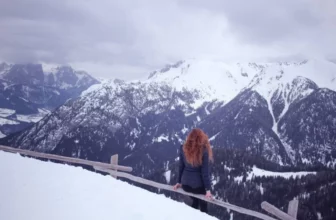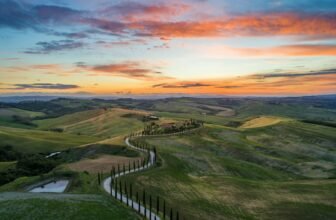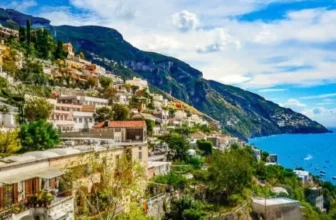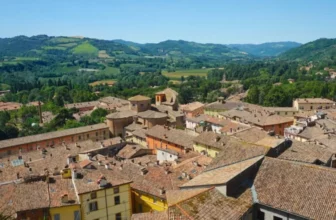Visiting Venice, Italy, in Winter – Weather, What to Wear & See
Your first thought may be to travel in the summertime, but when it comes to Venice, Italy, wintertime takes the cake. Enjoy spectacular Christmas lights and a festive atmosphere throughout December. And a romantic aura filling the serene canals for Valentine’s Day in February makes it the best time to travel to Venice, Italy.
Venice is in the Northern Hemisphere, making December, January and February the deep winter months and the best months in this city. Venice is in Italy and is made up of 118 small islands surrounded by 177 canals and all connected with over 400 bridges.
This unique environment makes Venice one of the most popular places to visit, bringing in over 60,000 tourists daily. However, in the winter, Venice is quiet, free from all the hustle and bustle, and a lot cheaper, making it the ideal time to visit!
Photo by Canmandawe,Unsplash
Average Venice Temperatures, Weather Patterns and Local Time
The temperature in Italy from December through to January ranges from 32F to 50F with an average of 5 days of rain per month. While the temperature in February ranges from 34F to 49F and gets warmer from then on. Venice summer weather averages 62F to 86F. It’s always a good idea to check the weather predictions before your trip. You can find the 10 day weather forecast for Venice, Italy here.
The Italian weather brings a cold but magical winter, giving you a good chance of some snowfall. In December and the early winter, it tends to be more windy and wet while late January and February have a high chance of a dusting of snow in the city.
Venice is in the CET time zone, making it 6 hours ahead of Washington DC. You can check the local time on the world clock.
The daylight hours in the early wintertime start around 07h30 and the sun sets close to 16h30, while later in January the daylight is lengthened, with sunrise at 07h00 and sunset 18h00.
Photo by Stijn te Strake, Unsplash
What to Wear in Italy
Since the winter can get rather chilly, warm clothes are recommended. The locals love to bring out the fur coats and hats when the weather starts cooling down. With the fashion capital of the world, Milan, not too far away, Venice brings some style to its canals. But be aware that if you plan to visit the famous churches of Venice, you need to cover up and dress conservatively. Some essentials locals love to wear include:
- Fleece lined leggings: These can be worn under pants, skirts or dresses to keep your legs extra toasty.
- Warm winter dresses: Floor lengths dresses with long sleeves keep you warm when the temperatures drop, especially when paired with a fur coat and fleece lined leggings.
- Knit hats: Knit hats not only keep your head and ears warm, but they are a cute accessory to wear while roaming the canals of Venice.
- Gloves: When the temperatures drop below freezing your bare hands will start to suffer; gloves are a fashionable way to keep them warm!
- Balaclava: When it’s windy or starts to snow, you’ll even want to cover as much of your face as possible. Balaclavas come in handy for that.
- Waterproof boots: (Make sure they are comfy). Boots are well suited to all the walking you’ll be doing in Venice. Remember there are no cars, and keep your toes warm and dry when walking through snow and rain.
Must-sees in Venice this winter
Although the wintertime can be wet, it won’t dampen your fun experience in Venice. There are many things to do in Venice in October through to February. From experiencing the history of the city to catching a trip in a gondola, all topped with exquisite meals to end off the day from one of the hundreds of authentic Italian restaurants.
Gondola Rides
Photo by Ricardo Gomes Angel, Unsplash
Going on a gondola ride is the signature in Venice. Skipping a gondola ride in Venice is like missing the Eiffel Tower in Paris or Table Mountain in Cape Town.
A gondola is a rowboat that can fit up to 6 passengers (depending on the weight), excluding the gondoliers, (this is the person who rows the gondola). Gondola rides are perfect for families or as a date idea, as they are the most romantic spot in the city, especially when the city is lit up with lights of the night.
Gondola rides are a great way to see the city, the gondoliers will also tell you about the history of the buildings the row past and sign if you want them to.
The prices of a gondola ride vary but are relatively standard at €80 ($97) for 25-30 minutes in the daytime, and €100 ($121) at night. The gondola prices are set so there’s little use in negotiating.
Museo del Vetro Glass Museum
Photo by Nick Fewings, Unsplash
If you’re a creative, glass lover, art fanatic, or just interested in the art and history of Venice, then the Museo Glass Museum is perfect for you. The museum showcases glass blowing techniques used through the centuries and displays historical glass from all over including Egypt. The glass museum is situated amongst the Murano islands. As the craft of glassmaking grew and became more popular, the Doge of Venice ordered all the glassmakers to move to the islands, far from civilians and prying eyes lurking and trying to steal secrets and designs for competitors.
The admission is €10 ($12) per person and is a fun outing for all ages. While visiting the islands you can also take a guided Glass Factory tour around the infamous buildings and visit one of the many exquisite restaurants the islands have to offer.
Saint Mark’s Square
Photo by Marika Sartori, Unsplash
Saint Mark’s Square, known in Venice as ‘Piazza San Marco’, is the finest square in Venice as well as the only square to be called piazza rather than campo. This Square offers a spectacular array of the best Venice has to offer. Throughout its history, the square was used for markets and was the center of religious life in the city.
The Square is surrounded on three sides with historic public buildings, including the highlight of Venice, the Basilica, with its accompanying, history-rich domes and arches. It’s the most popular destination in Venice because of it’s 4,240 square meters of golden mosaiced area. The lines are normally long to enter but entirely worth the wait.
While you’re waiting there are always hundreds of pigeons that flood the square and love to be fed by the locals and tourists. Birdfeed is available at the tourist stands in the square.
The admission for the Basilica is free, however, entrance to the museum is €5 ($6), entrance to the pala d’oro is €2 (less than $2.50) and entrance to the Treasury will be €3 ($3.50)
Final thoughts on Venice in Winter
Visiting Venice in the wintertime will reward you with reduced time standing in lines, fewer crowds, Italian comfort food, and a guilt-free trip for spending all day indoors exploring the magnificent museums Venice has to offer.
It also gives you the chance to wear the iconic Venice winter fashion and faux-fur coats as well as giving you more opportunity to take the iconic Venice Bridge photo with no photo bombers.









